And so the last of Izmir and continuing on to Istanbul...
[Sorry. I've stupidly done something to my arm/shoulder, and so typing has not been a priority the past few days. (Muscle spasm leading to pinched nerve... yes, ouch!) I think that the traveling has finally caught up with me, in a unique and sadly boomerang sort of way.]
So, after our big day visiting Priene, Miletus and Didyma, we decided that instead of going to Sardis on Monday (which was also C's birthday) We'd spend the day in town, Izmir, and do a little shopping, have a bit of a wander (visit the central bank to change some old and now uncirculating Turkish money that the bank in the US had given to C&S!) and have a döner kebap in the market or Kemeraltı in town. We also decided to "do" some little laundries in the room and then pack for our Tuesday departure.
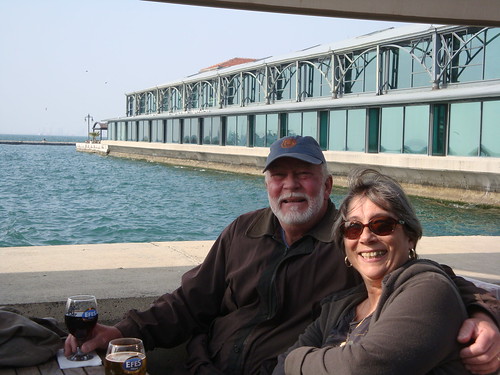 |
| we took advantage of the beautiful day and sat at Konak Pier |
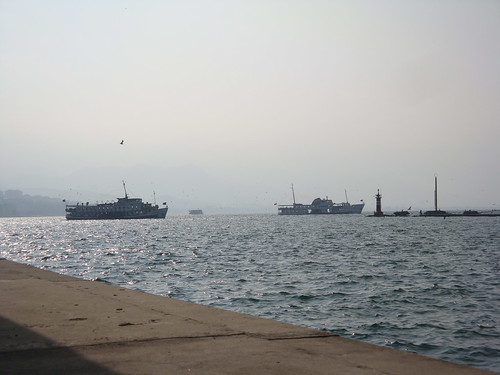 |
| watching the ships and ferry boats and enjoying the sun |
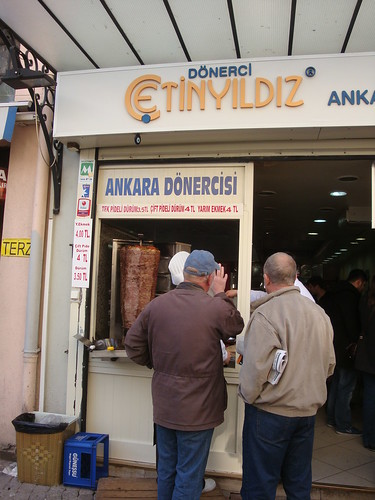 |
| choosing the best kebaps... |
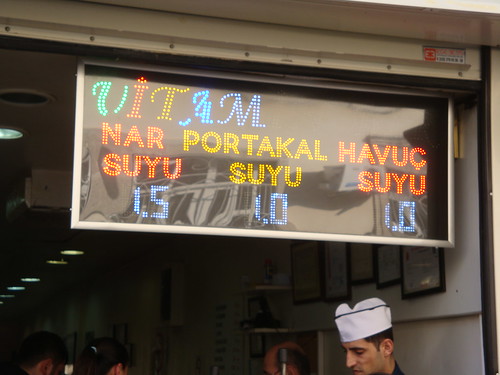 |
| and something to drink (fresh squeezed pomegranate, orange or carrot juice). |
 |
| too many things to choose |
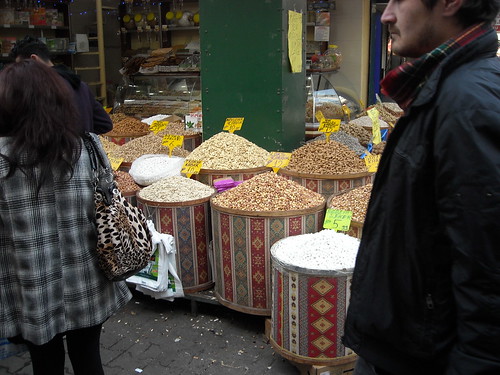 |
| too many things to see |
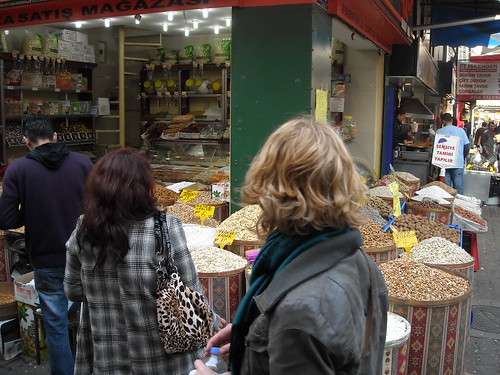 |
| always something new, something more. |
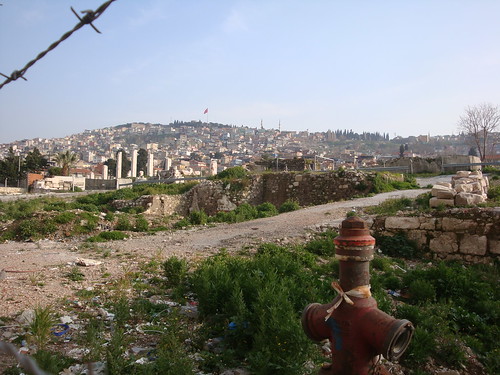 |
| not far from the edge of the current bazaar- the agora of ancient Smyrna! |
 |
| the birthday guy our last night at the hotel. |
The next day was our anniversary, but it was also the best day to travel so we checked out and managed to find our way back to the airport. We were returning the car a bit early, but a kind young man outside the airport entrance offered to call the rental car people and within five minutes, they'd come to pick up the car.
We were early, but we checked in with no problems and had a coffee and flew back to Istanbul (the flight is about the same time and distance as Corfu to Athens, 50 minutes.)
We were met on time, at the Sabiha Gökçen Airport by the nice people from
Backpacker's Shuttle and whisked away in a comfortable Mercedes van. The driver provided us with juice, water and little cakes (something our "no-frills" Pegasus flight didn't offer) so we had a nice ride back into town from the other direction, this time Asia to Europe.
We'd arrived in Istanbul at about 1 in the afternoon so we assumed we'd get to the hotel by around 2. We arrived just slightly before 2, and the check in took no time at all. We had lovely rooms, very different from our previous hotel rooms as the
Hotel Ayasofya is an old historic house that has been converted into a charming boutique hotel.
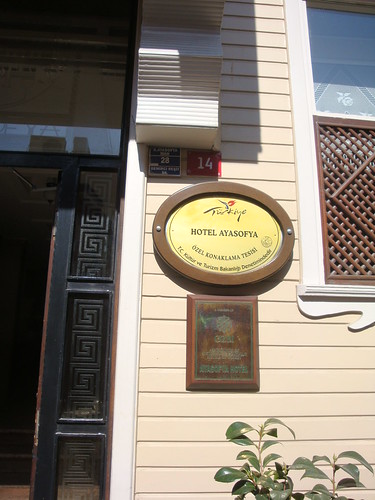 |
| lovely lovely hotel Ayasofya |
Our room was small but perfect for our needs (the bathroom was tiny, but the shower had plenty of hot water) and we had a small desk a cupboard to hang our clothes and three windows with a little nook.
It's located in a *real* neighborhood that was not too noisy (it was March) and seemed filled with mostly locals (ie: not much tourist traffic). The staff and owner were apparently well respected in the neighborhood, so I didn't feel vulnerable walking around at night. Once we became oriented to the Blue Mosque and the ancient Hippodrome, it became fairly easy to find our way back and around.
 |
| Gaye and a couple of her great employees. |
Gaye Reeves and her team are very hands on in their management style. Any questions you ask are answered - and if they don't know, they find the answer for you!
Our first question after we settled in, was where was the best place to go for our anniversary/birthday celebration dinner and without hesitation, she suggested
Hamdi Restaurant which turned out to be perfect! Really wonderful food - Meze, raki and then kebabs. The restaurant was almost all filled with Turkish customers when we went. Gaye had made the reservations and we had a corner window table with a beautiful view of the twinkling lights of the city and beyond, over Golden Horn and Bosphorus.
The restaurant is located across from the Galata Bridge, next to the Spice Bazaar.
~~~
But I suppose I should go back a bit. After we arrived, checked in and made our dinner reservations, we still had plenty of time to do some sightseeing. The first, of all the first sights to see, if for me anyway, is
Agia Sofia or the church of the Holy Wisdom.
 |
| It always takes my breath away |
 |
| each time I return the restorations have progressed |
 |
| so many of the amazing mosaics uncovered |
 |
| the beautiful details of its amazing history cleaned |
 |
| the stunning mosaic frescos uncovered everywhere |
 |
| even above doorways |
millions of people have prayed in this place and you can feel the great reverence.
The
first and probably humbler Hagia Sofia was built (probably) by Constantine before his death in 337. Fires and earthquakes contributed to it being rebuilt several times. The last and most familiar of these designs were by Isidore of Miletus under the direction of the Emperor Justinian.
The emperor had material brought from all over the empire - such as Hellenistic columns from the Temple of Artemis at Ephesus, large stones from quarries in porphyry from Egypt, green marble from Thessaly, black stone from the Bosporus region, and yellow stone from Syria. More than ten thousand people were employed.
From there we went a short walk across the tram tracks to the Yerebatan Sarnıcı (in Turkish that means "sunken palace") or the
Basilica Cisterns. This was build during the reign of Constantine,
 |
| such a wonderfully eerie place |
 |
| the first time I was ever in this place there was haunting classical music playing. |
The name of this subterranean structure derives from a large public square on the First Hill of Constantinople, the Stoa Basilica, beneath which it was originally constructed. Before being converted to a cistern, a great Basilica stood in its place, built between the 3rd and 4th centuries during the Early Roman Age as a commercial, legal and artistic center. The basilica was reconstructed by Ilius after a fire in 476.
Ancient texts indicated that the basilica contained gardens, surrounded by a colonnade and facing Hagia Sophia According to ancient historians, Emperor Constantine constructed a structure which was later rebuilt and enlarged by Emperor Justinian after the Nika riots of 532, which devastated the city.
Historical texts claim that 7,000 slaves were involved in the construction of the cistern.
The enlarged cistern provided a water filtration system for the Great Palace of Constantinople and other buildings on the First Hill, and continued to provide water to the Topkapi Palace after the Ottoman conquest in 1453 and into modern times.
Wikipedia
 |
| one of the two great medusa heads that used to lie under the water |
 |
| they've protected them by taking them out of the water, but now they look a bit dorky. |
 |
| after our sightseeing we stopped at a little place next to Hagia Sofia and had some tea and a bit of hubbly bubbly! |
 |
| from there we had time to visit the Blue Mosque |
 |
| The soaring interior was created by the architect Sinan. |
 |
| looking back through the archway to see Hagia Sofia |
Finally we walked back to our hotel to get ready for dinner. We passed the ancient
Hippodrome along the side of the Blue Mosque.
 |
| finally made our way back to the hotel. |
We rested for about an hour and then took a taxi to the restaurant. A really amazing day. And as we left the warmth of the restaurant - waiting for our cab, we looked back and noticed someone else having a pleasant end to the day:
Next post will be Topkapi and the archaeological museum (another BIG day!)






























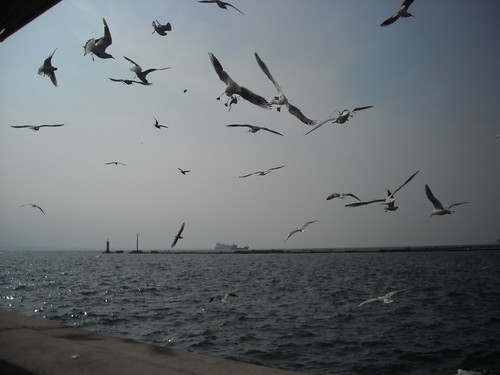



Wonderful photos, thank you again.
ReplyDeleteGoodness, that really took me back...and it was wonderful to see the restoration work at Hagia Sophia...it was so gloomy and sad when I saw it.
ReplyDeleteoh....to think I walked in your footsteps! We only went to Ag. Sophia & the markets, we were short on time. I didn't even know about the sunken palace- I would have gone there for sure. Oh well, I'll have to go back! :)
ReplyDeleteeverythings perfect,regards
ReplyDelete